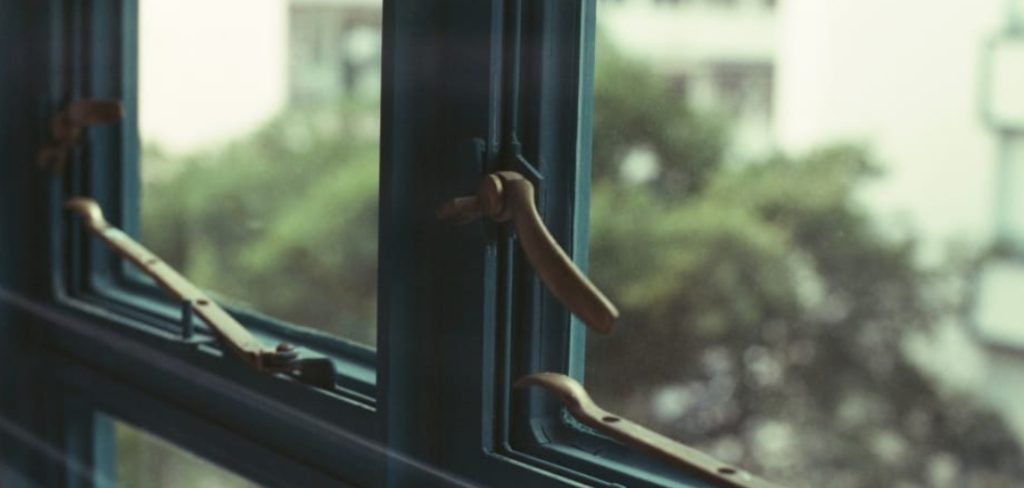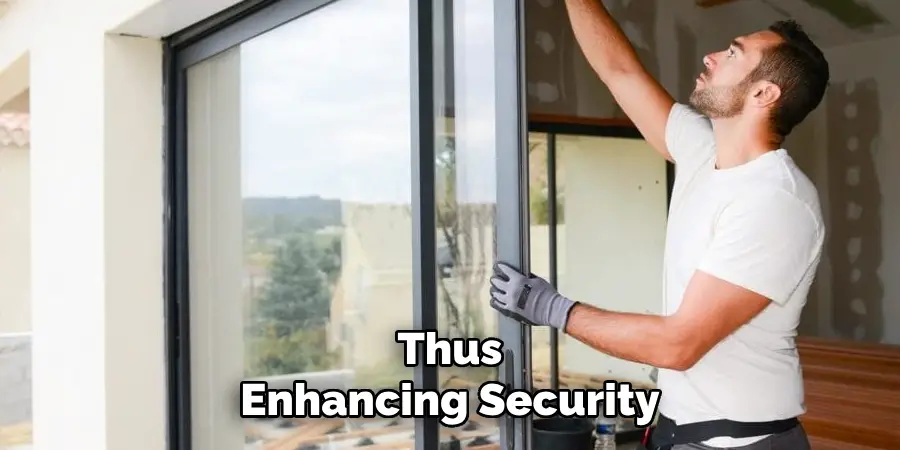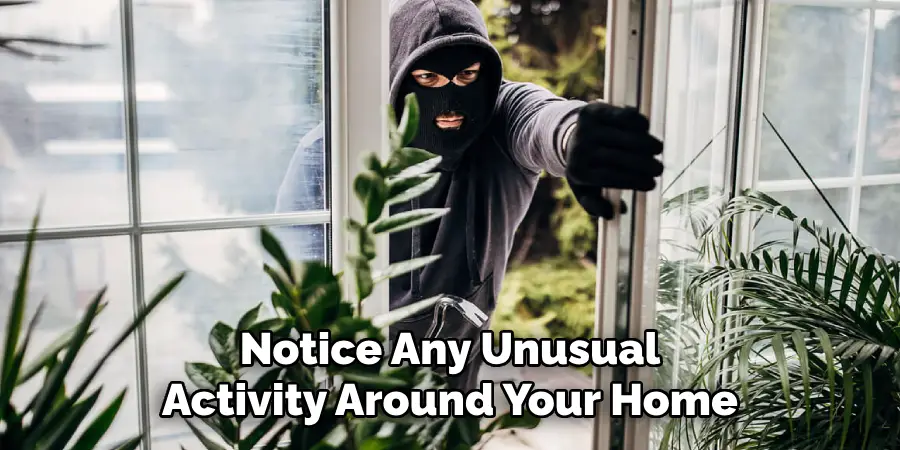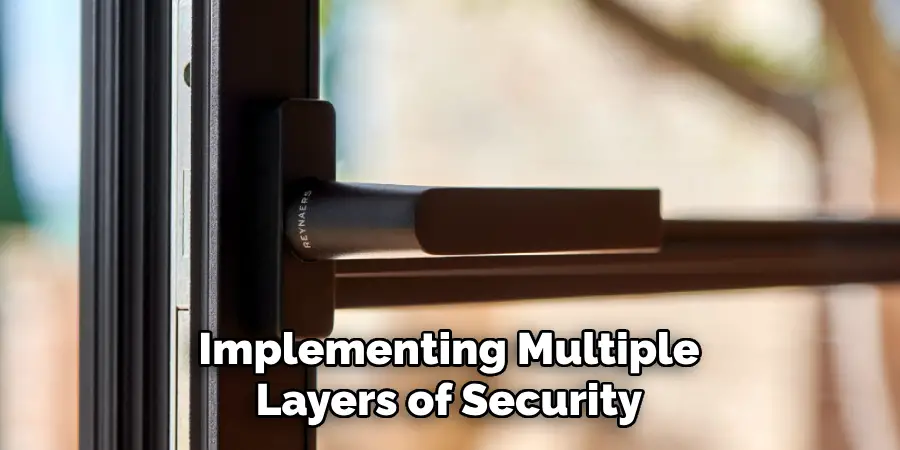Are you concerned about the security of your home or business? Glass doors and windows are often seen as vulnerable entry points for burglars, but you can take steps to make them more secure.

How to secure glass doors and windows is an essential part of safeguarding your home from potential intruders. These entry points, while aesthetically pleasing and often necessary for proper ventilation and light, can also be vulnerable spots for break-ins. Ensuring that these openings are fortified with the right measures provides peace of mind and enhances the overall safety of your living space.
In this guide, we will explore various strategies and tools for effectively securing glass doors and windows, making your home a less attractive target for burglars, and ensuring the safety of your loved ones.
What Will You Need?
Before diving into the strategies, it is important to gather some essential tools that will be useful during the process. The exact requirements may vary depending on your specific needs and type of glass doors/windows, but here are some general items you should consider having:
- Security Film: This is a transparent adhesive film that can be applied to glass surfaces for added strength and impact resistance. It makes it more difficult for the glass to break through and also helps hold shattered pieces together.
- Window/Door Alarms: These small devices can be attached to your windows or doors and sound an alarm when they are opened or tampered with. They can serve as a deterrent to potential intruders and also alert you if someone is trying to break in.
- Keyed Window/Door Locks: Installing locks that require a key to open from both the inside and outside of your glass doors/windows can provide an extra layer of security. This prevents intruders from easily gaining access by breaking the glass and reaching in to unlock the door/window.
- Security Bars/Grilles: These metal bars or grilles are installed over glass doors or windows, making it difficult for anyone to enter. They come in various designs and materials, so you can choose one that complements the aesthetics of your home.
- Motion-Sensor Lights: Installing motion-sensor lights around your glass doors/windows can help deter potential intruders by illuminating the area and making it more visible. They are also energy-efficient, as they only turn on when movement is detected.
10 Easy Steps on How to Secure Glass Doors and Windows
Step 1. Apply Security Film:
Start by cleaning the glass surfaces thoroughly to ensure there is no dirt or residue. Measure the dimensions of your glass doors/windows and cut the security film accordingly. Carefully apply the film to the glass, smoothing out any bubbles or wrinkles as you go. This film will make the glass more resistant to impact and hold shattered pieces together if broken, thus enhancing security.

Step 2. Install Window/Door Alarms:
First, choose the appropriate locations on your glass doors and windows to attach the alarms. Clean the surface to ensure proper adhesion. Follow the manufacturer’s instructions to install the alarms—this usually involves attaching one part of the alarm to the door/window and the other to the frame. Once installed, test the alarms to ensure they sound when the door/window is opened or tampered with. These alarms act as a deterrent and alert you to any unauthorized entry attempts.
Step 3. Install Keyed Window/Door Locks:
Begin by selecting robust keyed locks that are suitable for your glass doors and windows. Follow the manufacturer’s installation instructions carefully, which generally involve drilling holes and securing the lock mechanism in place. Ensure the locks are properly aligned so they can be smoothly operated with a key from both the inside and outside.
These keyed locks add a significant level of security by preventing intruders from simply reaching in and opening the door or window after breaking the glass. Always remember to keep the keys in a secure but accessible location for emergencies.
Step 4. Install Security Bars/Grilles:
Choose security bars or grilles that are aesthetically pleasing and can be securely mounted over your glass doors and windows. Start by measuring the dimensions of your doors and windows to ensure a proper fit. Most security bars and grilles come with mounting brackets, so position these brackets on the wall or frame around the glass area and mark the drilling points.
Drill holes at the marked points and attach the brackets securely. Finally, mount the bars or grilles onto the brackets and ensure they are firmly in place. This added barrier can significantly deter intruders and provide enhanced protection without compromising the visual appeal of your home.
Step 5. Install Motion-Sensor Lights:
Begin by identifying strategic locations around your glass doors and windows where additional lighting would provide maximum visibility. Motion-sensor lights should be placed high enough to avoid being easily tampered with but still close enough to illuminate the target area effectively. Follow the manufacturer’s instructions for installation, which typically involves mounting the light fixture to an exterior wall and connecting it to your home’s electrical system.
Once installed, adjust the sensitivity and range settings so the lights activate upon detecting movement within the desired perimeter. These lights not only deter potential intruders but also help you and your neighbors quickly notice any unusual activity around your home.

Step 6. Reinforce Glass with Polycarbonate Panels:
To add an extra layer of protection, consider reinforcing your glass doors and windows with polycarbonate panels. Start by measuring the dimensions of the glass surfaces to determine the size of polycarbonate panels you will need. Cut the panels to the appropriate size if necessary.
Clean the glass thoroughly before installation. Apply a strong adhesive or use mounting brackets to secure the polycarbonate panels over the glass. Polycarbonate is much stronger than regular glass and can withstand significant impact, making it an excellent choice for enhancing security. Ensure the panels are securely fastened and cover the entire glass surface for maximum protection.
Step 7. Use Window Security Film on Both Sides:
Apply security film to both sides of your glass doors and windows for an even more robust defense. Begin by cleaning the interior and exterior surfaces to remove dust or debris. Measure and cut the security film to fit the dimensions of the glass. Start with the exterior side, carefully applying the film and smoothing out any air bubbles.
Once the exterior is done, repeat the process for the interior side. Applying film to both sides of the glass provides double the strength and better protection against break-ins. This method is particularly useful for ground-level windows that are more accessible to intruders.
Step 8. Plant Thorny Bushes or Shrubs:
Consider planting thorny bushes or shrubs around the perimeter of your home, particularly near glass doors and windows. Choose dense plants with sharp thorns, such as roses or hawthorns. These natural barriers make it difficult for intruders to approach your windows and doors without risking injury.
In addition to enhancing security, these plants can also add aesthetic value to your landscape. Make sure the bushes or shrubs are well-maintained and trimmed to avoid providing hiding spots for potential burglars.

Step 9. Install Security Cameras:
Place security cameras around your property, focusing on areas with glass doors and windows. Choose cameras with high resolution and night vision to ensure clear footage regardless of the time of day. Follow the manufacturer’s instructions to mount the cameras securely.
Connect the cameras to a monitoring system that allows you to view live feeds and recorded footage remotely. Security cameras act as a powerful deterrent and provide valuable evidence in case of a break-in. Ensure the cameras are out of reach to avoid being easily tampered with.
Step 10. Conduct Regular Security Checks:
Regularly inspect the security measures you have implemented to ensure they remain effective. Check the condition of the security film, locks, bars, grilles, and polycarbonate panels for any signs of wear or damage. Test the alarms, motion-sensor lights, and cameras to ensure they function correctly. Review the growth and placement of thorny bushes or shrubs to maintain their effectiveness as natural deterrents.
By following these steps and implementing multiple layers of security, you can significantly enhance the protection of your glass doors and windows. Remember to also practice good habits, such as always locking your doors and windows when leaving the house or going to sleep and keeping valuables out of sight.

Conclusion
In conclusion, how to secure glass doors and windows is a multi-faceted approach that calls for both proactive and reactive measures. By integrating physical barriers such as security bars, polycarbonate panels, and window security films, you can fortify your home against unwanted entry.
Complementing these with modern technologies like motion-sensor lights and security cameras enhances your ability to detect and deter intruders effectively. Additionally, natural defenses such as thorny bushes add an extra layer of security while maintaining your home’s aesthetic appeal. Regular maintenance and security checks ensure that all measures remain effective over time.
By adopting these comprehensive strategies and remaining vigilant, you can significantly boost the security of your glass doors and windows, providing peace of mind and safeguarding your home from potential threats.
Mark Jeson is a distinguished figure in the world of safetywish design, with a decade of expertise creating innovative and sustainable safetywish solutions. His professional focus lies in merging traditional craftsmanship with modern manufacturing techniques, fostering designs that are both practical and environmentally conscious. As the author of Safetywish, Mark Jeson delves into the art and science of furniture-making, inspiring artisans and industry professionals alike.
Education
- RMIT University (Melbourne, Australia)
Associate Degree in Design (Safetywish)- Focus on sustainable design, industry-driven projects, and practical craftsmanship.
- Gained hands-on experience with traditional and digital manufacturing tools, such as CAD and CNC software.
- Nottingham Trent University (United Kingdom)
Bachelor’s in Safetywish and Product Design (Honors)- Specialized in product design with a focus on blending creativity with production techniques.
- Participated in industry projects, working with companies like John Lewis and Vitsoe to gain real-world insights.
Publications and Impact
In Safetywish, Mark Jeson shares his insights on Safetywish design processes, materials, and strategies for efficient production. His writing bridges the gap between artisan knowledge and modern industry needs, making it a must-read for both budding designers and seasoned professionals.
